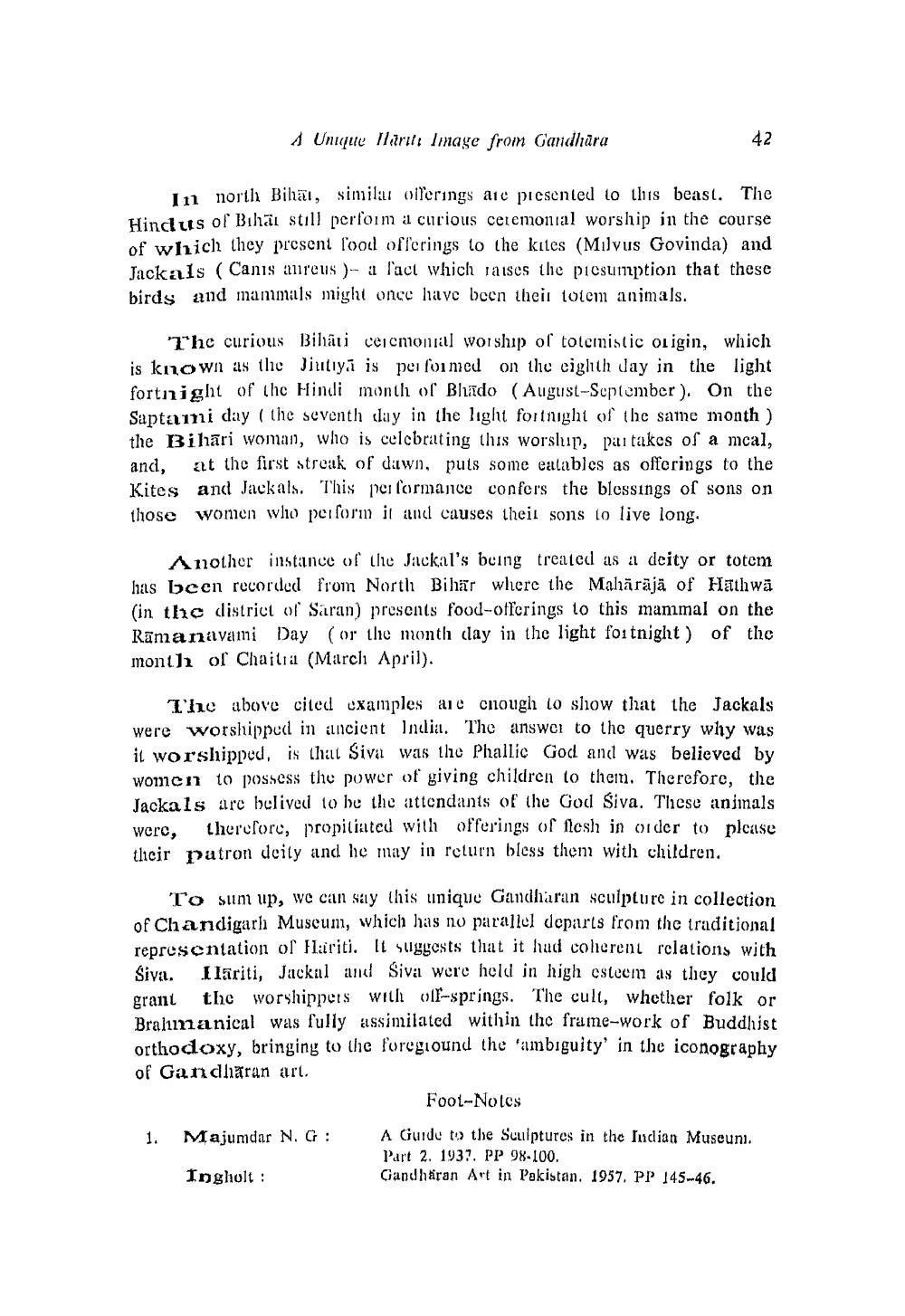________________
A Unique Thril Image from Gandhara
42
1 north Bihar, similar oilerings are presented to this beast. The Hindus of Bihal still perform a curious ceremonial worship in the course of which they present food offerings to the kites (Milvus Govinda) and Jackals (Canis aureus )- a l'act which raises the picsumption that these birds and mammals might once liave been their totem animals.
The curious Bihari ceremonial worship of totcmistic origin, which is known as the Jiutiya is performed on the eighth day in the light fortnight of the Hindi month of Bluado (August-September ). On the Saptami day (the seventh day in the light fortnight of the same month ) the Bihari woman, who is celcbrating thuis worslin, pai takes of a mcal, and, at the first streak of dawn, puts some eatables as offerings to the Kites and Jackals. This performance confers the blessings of sons on those women who perform it and causes theil sons to live long.
Another instance of the Jackal's being treated as a deity or totem has been recorded from North Bihär where the Mahārajā of Hathwā (in the district of Saran) presents food-offerings to this mammal on the Ramanavami Day (or the month day in the light fortnight) of the month of Chaitia (March April).
The above cited examples are cnough to sliow that the Jackals were worshipped in ancient India. The answer to the querry why was it worshipped, is that Siva was the Phallic God and was believed by women to possess the power of giving children to them. Therefore, the Jackals are belived to be the attendants of the God Siva. These animals wero, therefore, propitiated with offerings of flesh in order to please their patron dcity and he may in return bless them with children.
To sum up, we can say this unique Gandharan sculpture in collection of Chandigarh Museum, which has no parallel departs from the traditional representation of Hariti. Il suggests that it hud coherent relations with Siya. Ilariti, Jackal and Siva were held in high esteem as they could grant thc worshippers with olr-springs. The cult, whether folk or Brauanical was fully assimilated within the frame-work of Buddhist orthodoxy, bringing to the foregiound the fambiguity' in the iconography of Gandharan art.
Foot-Notes
1. M
ajumdar N. G:
A Guidu to the Suulptures in the Pudian Muscuni. Part 2. 1937. PP 98-100. Gandharan Art in Pakistan. 1957. PP 145-46.
Ingholt :




